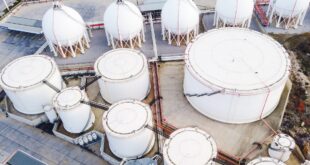There were 4.7 million more people employed in clean energy in 2022 than in 2019, according to latest data from influential organisatoin
The number of people employed in the energy sector is growing fast, as demand for solar, wind, and other clean energy technologies has soared in all regions of the world.
Data published this morning by the International Energy Agency (IEA) reveals that more than 67 million people were employed in the energy sector in 2022, an increase of 3.4 million on 2019 levels.
The report confirms that clean energy sectors powered the growth in energy industry jobs, with the number of clean energy workers rising by 4.7 million since 2019 to over 35 million people.
In contrast, jobs in the fossil fuel industry have recovered more slowly following pandemic-related layoffs and now sit at 32 million roles. As such, there were 1.3 million fewer people employed in the coal, oil, and gas sectors in 2022 compared to 2019.
Solar PV, wind, electric vehicles and batteries, heat pumps, and critical minerals were collectively responsible for more than half of energy sector employment growth between 2019 and 2022. Together, the five sectors employ around nine million people, of which solar PV accounts for almost half, at four million.
The IEA said the growth in clean energy jobs occurred in every region, but was most pronounced in China, which remains home to the world’s largest energy workforce. It also noted that across the five clean energy ‘growth’ sectors, batteries and EVs saw the most rapid employment growth, adding more than one million jobs since 2019.
The organisation’s updated Net Zero Roadmap, published in September, predicted that 30 million new clean energy jobs would be created by 2030, while 13 million jobs are expected to be lost in fossil fuel-related industries by the same date.
But alongside the positive trends, the IEA today raised fresh alarms that a major skills shortage could hamper the growth of clean energy and clean energy-affiliated sectors.
Construction-related occupations are set to face particularly acute skills shortages, limiting the availability of labour to install clean energy technologies and retrofit buildings, according to the analysis.
The IEA forecasts half the new job openings in clean energy-related sectors between now and 2030 to be in the construction.
IEA executive director, Fatih Birol, urged governments to work with business to upskill and reskill workers for the energy transition.
“The unprecedented acceleration that we have seen in clean energy transitions is creating millions of new job opportunities all over the world – but these are not being filled quickly enough,” he said. “Governments, industry and educational institutions need to put in place programmes to deliver the expertise needed in the energy sector to keep pace with growing demand, particularly to manufacture and build the clean energy projects necessary to meet our energy and climate goals.”
The IEA has urged policymakers to focus on training and capacity building that can shrink the skills gap, stressing that demand for workers in clean energy is only expected to grow over the coming years.
The challenge is compounded by the energy sector requiring a more specialised workforce than many other industries, with roughly 36 per cent of roles classified as high-skilled occupations, compared with an economy-wide average of 27 per cent, it said.
While some workers can be retrained from fossil fuel industries, the IEA said it would also be “essential” to recruit workers into the energy sector from other industries.

 Iran Energy News Oil, Gas, Petrochemical and Energy Field Specialized Channel
Iran Energy News Oil, Gas, Petrochemical and Energy Field Specialized Channel



